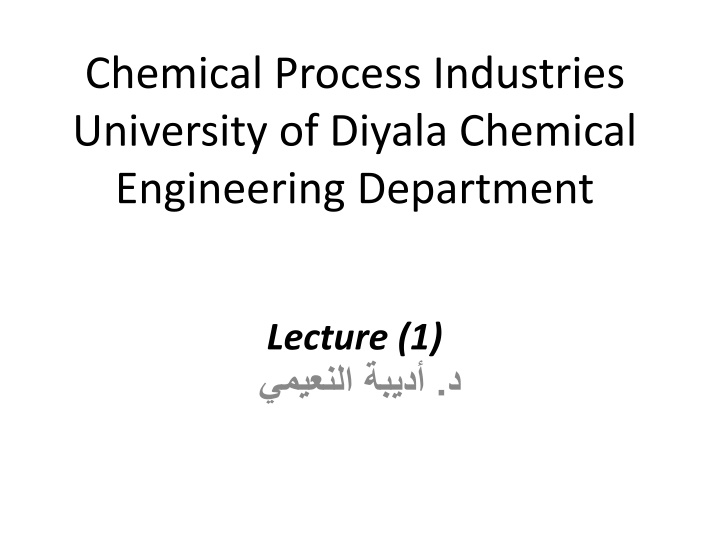
Based on the content provided, here are the requested items: "Evolution of Petrochemical Industry: Past Trends and Future Prospects
Explore the historical evolution of the petrochemical industry, witnessing shifts in production dominance from the United States, Western Europe, and Japan to countries with vast oil and gas reserves like Saudi Arabia and Canada. Discover how the need for synthetic chemicals during World War II shaped the industry and the diversified roles it plays today. Witness the growth of petrochemical plants in Texas and the changing landscape of global primary petrochemical production.
Download Presentation

Please find below an Image/Link to download the presentation.
The content on the website is provided AS IS for your information and personal use only. It may not be sold, licensed, or shared on other websites without obtaining consent from the author. If you encounter any issues during the download, it is possible that the publisher has removed the file from their server.
You are allowed to download the files provided on this website for personal or commercial use, subject to the condition that they are used lawfully. All files are the property of their respective owners.
The content on the website is provided AS IS for your information and personal use only. It may not be sold, licensed, or shared on other websites without obtaining consent from the author.
E N D
Presentation Transcript
Chemical Process Industries University of Diyala Chemical Engineering Department Lecture (1) .
Introduction: Industrial Countries The world petrochemical industry has changed drastically in the last twenty to thirty years. The United States, Western Europe and Japan previously dominated production of primary petrochemicals,
i.not only to supply their own domestic demand. ii.but also to export to other world markets. These areas accounted for over 80% of world primary petrochemical production prior to 1980
3-Countries with vast reserves of crude oil and natural gas (e.g., Saudi Arabia andCanada) have constructed plants. to add value to their resources. Since these countries generally have smaller domestic demand. Petrochemical production is earmarked for the export market.
The need for synthetic rubber and synthetic chemicals for explosives during World War II prompted the development of the highly specialized petrochemical industry in America. After 1952 the state's share in the American petrochemical industry increased dramatically
During the 1960s increasingly all phases industry: furnishing and processing oil and gas, producing petrochemicals, and manufacturing commercial commodities. played an role in diversified of the petrochemical
By 1965 200 petrochemical plants in Texas processed such basic petrochemicals as ethylene, propylene, butadiene, benzene, isoprene, and xylenes, which are the building blocks for innumerable chemical products spanning the range of the plastic, rubber, and synthetic fiber industries.
The petrochemical industries in the United States, Western Europe and Japan have experienced lower growth rates. In 2010, these three regions accounted for only 37% of world primary petrochemicals production
Petrochemicals: Petrochemicals in general are compounds and polymers derived directly or indirectly from petroleum and used in the chemical market. The major petrochemical products: are plastics, synthetic fibers, synthetic rubber, detergents, and nitrogen fertilizers. Many other important chemical industries such as paints, adhesives, insecticides, and pharmaceuticals may involve one or more petrochemical products within their manufacturing steps.
Structure and schemes of petrochemical industries, main petrochemical equipment :steam crackers, quench towers, scrubbers. Olefins and aromatic plants. Hydrogen plants ,Synthesis gas .Unit processes for intermediates. Polymerization and polycondensation, Trends in petrochemical industries.
